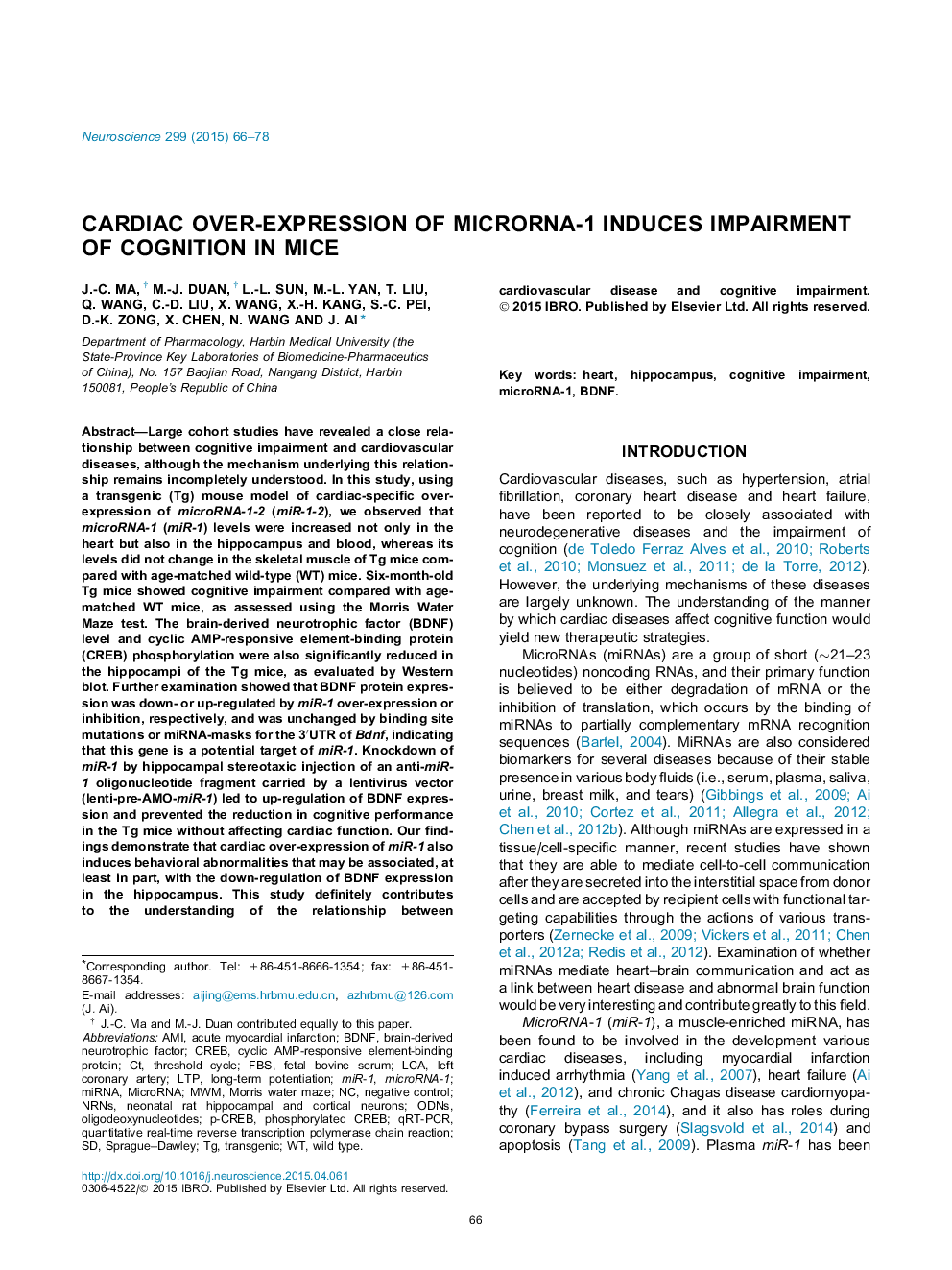| Article ID | Journal | Published Year | Pages | File Type |
|---|---|---|---|---|
| 4337464 | Neuroscience | 2015 | 13 Pages |
•Cognitive impairment in Tg mouse with cardiac-specific over-expression of miR-1.•MiR-1 increases in the blood and hippocampus of Tg mouse.•MiR-1 targets Bdnf gene.•Inhibition of miR-1 in the hippocampus protects against cognitive deterioration of Tg mouse.
Large cohort studies have revealed a close relationship between cognitive impairment and cardiovascular diseases, although the mechanism underlying this relationship remains incompletely understood. In this study, using a transgenic (Tg) mouse model of cardiac-specific over-expression of microRNA-1-2 (miR-1-2), we observed that microRNA-1 (miR-1) levels were increased not only in the heart but also in the hippocampus and blood, whereas its levels did not change in the skeletal muscle of Tg mice compared with age-matched wild-type (WT) mice. Six-month-old Tg mice showed cognitive impairment compared with age-matched WT mice, as assessed using the Morris Water Maze test. The brain-derived neurotrophic factor (BDNF) level and cyclic AMP-responsive element-binding protein (CREB) phosphorylation were also significantly reduced in the hippocampi of the Tg mice, as evaluated by Western blot. Further examination showed that BDNF protein expression was down- or up-regulated by miR-1 over-expression or inhibition, respectively, and was unchanged by binding site mutations or miRNA-masks for the 3′UTR of Bdnf, indicating that this gene is a potential target of miR-1. Knockdown of miR-1 by hippocampal stereotaxic injection of an anti-miR-1 oligonucleotide fragment carried by a lentivirus vector (lenti-pre-AMO-miR-1) led to up-regulation of BDNF expression and prevented the reduction in cognitive performance in the Tg mice without affecting cardiac function. Our findings demonstrate that cardiac over-expression of miR-1 also induces behavioral abnormalities that may be associated, at least in part, with the down-regulation of BDNF expression in the hippocampus. This study definitely contributes to the understanding of the relationship between cardiovascular disease and cognitive impairment.
Graphical abstractFigure optionsDownload full-size imageDownload high-quality image (187 K)Download as PowerPoint slide
